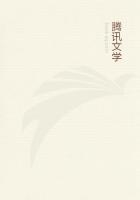
第18章
For hunting fawns[1] and deer,[2] Indian dogs[3] should be employed, as being strong, large, and fleet-footed, and not devoid of spirit; with these points they will prove well equal to the toil.
[1] See Hom. "Il." xxii. 189, x. 361; "Od." iv. 35; Aelian, "N. A."xiv.14; xvii. 26; Geopon. xix. 5.
[2] {e elaphos} (generic, Attic) = hart or hind, of roe (Capreolus caprea) or red (Cervus elaphus) deer alike, I suppose. See St. John, "Nat. Hist. and Sport in Moray."[3] Of the Persian or Grecian greyhound type perhaps. See Aristot. "H. A." viii. 28; Aelian, "N. A." viii. 1; Pollux, v. 37, 38, 43; Plin. "H.
N." vii. 2, viii. 28; Oppian, "Cyn." i. 413.
Quite young fawns[4] should be captured in spring, that being the season at which the dams calve.[5] Some one should go beforehand into the rank meadowlands[6] and reconnoitre where the hinds are congregated, and wherever that may be, the master of the hounds will set off--with his hounds and a supply of javelins--before daylight to the place in question. Here he will attach the hounds to trees[7] some distance off, for fear of their barking,[8] when they catch sight of the deer. That done he will choose a specular point himself and keep a sharp look-out.[9] As day breaks he will espy the hinds leading their fawns to the places where they will lay them severally to rest.[10] Having made them lie down and suckled them, they will cast anxious glances this way and that to see that no one watches them; and then they will severally withdraw to the side opposite and mount guard, each over her own offspring. The huntsman, who has seen it all,[11] will loose the dogs, and with javelins in hand himself advance towards the nearest fawn in the direction of where he saw it laid to rest; carefully noting the lie of the land,[12] for fear of making some mistake; since the place itself will present a very different aspect on approach from what it looked like at a distance.
[4] See above, v. 14. I do not know that any one has answered Schneider's question: Quidni sensum eundem servavit homo religiosus in hinnulis?
[5] "The fawns (of the roe deer) are born in the spring, usually early in May," Lydekker, "R. N. H." ii. p. 383; of the red deer "generally in the early part of June," ib. 346.
[6] {orgadas} = "gagnages," du Fouilloux, "Comment le veneur doit aller en queste aux taillis ou gaignages pour voir le cerf a veue," ap. Talbot, op. cit. i. p. 331.
[7] Or, "off the wood."
[8] It seems they were not trained to restrain themselves.
[9] Or, "set himself to observe from some higher place." Cf. Aristoph. "Wasps," 361, {nun de xun oplois} | {andres oplitai diataxamenoi} |{kata tas diodous skopiorountai}. Philostr. 784.
[10] See Pollux, v. 77; Aristot. "H. A." ix. 5. Mr. Scrope ap. Lydekker, "R. N. H." ii. p. 346, states that the dam of the red deer makes her offspring "lie down by a pressure of her nose," etc.
[11] Lit. "when he sees these things."
[12] Or, "the features of the scene"; "the topography."When his eye has lit upon the object of his search, he will approach quite close. The fawn will keep perfectly still, glued[13] as it were to earth, and with loud bleats suffer itself to be picked up; unless it happen to be drenched with rain; in which case, it will not stay quiet in one place. No doubt, the internal moisture of the animal congeals quickly with the cold[14] and causes it to shift its ground. Caught in that case it must needs be; but the hounds will have work enough to run the creature down.[15] The huntsman having seized the fawn, will hand it to the keeper. The bleating will continue; and the hind, partly seeing and partly hearing, will bear down full tilt upon the man who has got her young, in her desire to rescue it. Now is the moment to urge on the hounds and ply the javelins. And so having mastered this one, he will proceed against the rest, and employ the same method of the chase in dealing with them.
[13] {piesas}, "noosling, nestling, buried." [14] "The blood runs cold."[15] Or, "but it will give them a good chase; the dogs will have their work cut out."Young fawns may be captured in the way described. Those that arealready big will give more trouble, since they graze with their mothers and the other deer, and when pursued retire in the middle of the herd or occasionally in front, but very seldom in the rear. The deer, moreover, in order to protect their young will do battle with the hounds and trample them under foot; so that capture is not easy, unless you come at once to close quarters and scatter the herd, with the result that one or another of the fawns is isolated. The effort implies[16] a strain, and the hounds will be left behind in the first heat of the race, since the very absence of their dams[17] will intensify the young deer's terror, and the speed of a fawn, that age and size, is quite incredible.[18] But at the second or third run they will be quickly captured; since their bodies being young and still unformed cannot hold out long against fatigue.
[16] Lit. "after that violent effort."